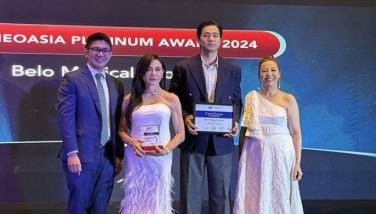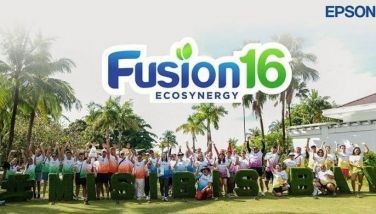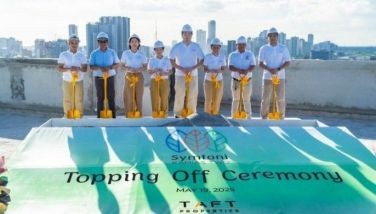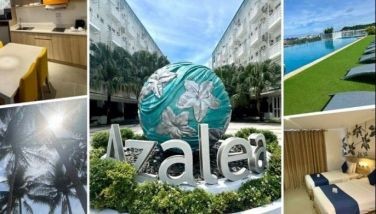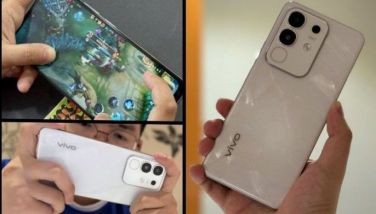Remembering Don Vicente Gullas
Today, January 12, is the 124th birth anniversary of Don Vicente Gullas, founder and first president of the University of the Visayas. For the information of those who do not know him, particularly the young generation, here’s a brief story of his life:
The founder of the University of the Visayas was born on January 12, 1888, in Cebu City. His parents were Herminigildo Gullas and Necifora Arandia, a couple of modest means. They had three children: Vicente, Paul and Rosario.
As a child Vicente was sickly, having gone through a series of serious ailment, including infantile paralysis and typhoid fever, in his early years. Despite this, the boy managed to learn his alphabet at a very early age with the help of his mother. It was said that even before he could read, he was already fluent in his native tongue, Cebuano.
When the boy turned seven, his parents enrolled him at one of the primary schools run by an Americans teacher named Samuel McLintock. This was in 1895 when the public school system in the country was yet in its early stage.
In his second grade, Vicente enrolled at what is now the San Nicolas Elementary School located in Carlock Street, Cebu City. However, Vicente was unable to finish the school year on account of ill health. His parents then decided to send him to Maasin, Leyte, the hometown of his father. There he stayed for four years free from the rigors of schoolwork.
Country life in Maasin had a recuperative effect on the boy who spent his time outdoors – hunting birds, pasturing carabaos or just helping in farm-house chores. He was also said to frequent the sea where he learned how to swim with the boys of his age.
This exposure to outdoor life developed in the child a keen awareness of nature’s beauty and appeal, a trait which was observable in his later life.
In 1906 having completed his elementary grades, the young Gullas first enrolled at the Seminario de San Carlos located in what is now Juan Luna avenue. This was a school run by the SVD fathers and was reputed for its excellent instruction and discipline. But perhaps the highly structured system at the seminary did not go well with the boy. So he transferred to the Cebu High School (now the Abellana National High School).
As a student, Vicente excelled in both curricular and extra-curricular subjects. He was a table-tennis athlete, an event he mastered to the point of winning a championship in the game. As if this was enough, he also took some training in “eskirima” or native fencing as well as in boxing, wrestling and in “argolla.”
In order to help his parents Vicente worked his way to school. While he was a sophomore in the high school he served as a clerk and checker on outgoing and incoming vessels in Cebu City earning only one peso a month. Although he was a working student, still he managed to come out as one of the best in his class. One proof of this was that whenever his teacher in Review Arithmetic was absent, he was made to handle the subject. Active in extracurricular activities, he won first prize in a speaking contest on December 24, 1909, and was thrice elected president of the Cebu Debating Club. After he finished his sophomore year, he decided to try his luck in Manila.
Vicente continued his studies in the Manila High School in 1909. There he was still active in extracurricular activities even if he was knee-deep with newspaper work. As a student he was also made to handle both Mathematics and World History whenever Professor Power, the Mathematics and History instructor, was absent. In school he distinguished himself with his writing ability, becoming the first assistant editor of the school organization. In addition, he was elected secretary of the Rizal Debating Club in his junior year, and in his senior year, he was elected president of the Club. Among his classmates in the Manila High School were three students who became years later presidents of the Philippines. These were Jose Laurel, Manuel Roxas and Elpidio Quirino. Some of his classmates became department secretaries (Jose Yulo and Ricardo Nepomuceno) provincial governors (the Aganad brothers) and other outstanding personalities such as Vicente Villamin, one of the greatest world economic specialists and ex-economic advisers of former President Garcia, General Basilio Valdez, General Alberto Ramos, and Director Demetrio Andres. Their class was dubbed as the “Blest Class of 1911”.
During the pre-war years, one was allowed to take the bar examinations without completing the required four-year curriculum leading to the degree of Bachelor of Laws. With Atty. Bienvenido Tan attesting, Gullas, then a junior law student, took the bar and passed.
With such qualifications other young men would have chosen to become socially prominent and merely that.
But it was not social prominence alone he wanted. Rather he was more concerned of the way to acquire this, “not just in any way but in a way that is strikingly scrupulous and decent.” He had a promising law practice; his future was a bright one. But this soon ceased to give him much satisfaction.
At that time his brother, Paulino, was already a prominent practicing lawyer. A bar topnotcher, his services were sought after by clients from different parts of the country. It was then that Paulino requested his brother, Vicente, to join him in his law office. But the latter declined the offer. Although aware that practicing as a lawyer was a highly rewarding and prestigious career, he chose a more difficult but service-oriented line work – that of an educator. Thus, the new lawyer became an educator, a calling with which he was able to fulfill his ambition of serving the youth of the land through education.
In terms of his influence on the educational system in the Visayas, the late Atty. Vicente Gullas was among the outstanding educators in this part of the country. The former president of the University of the Visayas, the first university in Cebu and the biggest educational institution (during his time) in Central Visayas, his achievements in education is well known.
Futuristic in outlook, he pioneered such educational innovations as evening classes for high school and college students, study-now-pay later scheme, the work-and-study plan for children of low-income families, the operation of field secondary and tertiary schools – young people from low income families to finish strategies which have enabled thousands of young people from low-income families to finish professional courses and become recognized practitioners in their chosen fields.
Philanthropic and deeply religious, he ran the Visayan Institute and later, the University of the Visayas as a service-oriented institution founded upon the ideals of humanism, love and leadership. While he focused on academic excellence, he never lost sight of the need for career development for self-improvement and better citizenship.
- Latest
- Trending










